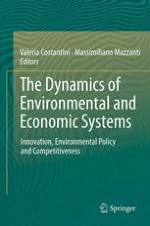2013 | OriginalPaper | Chapter
4. Energy Efficiency Policy in the USA: The Impact of the Industrial Assessment Centres (IAC) Programme and State and Regional Climate Policy Actions
Authors : Luis Maria Abadie, Ramon Arigoni Ortiz, Ibon Galarraga, Anil Markandya
Published in: The Dynamics of Environmental and Economic Systems
Publisher: Springer Netherlands
Activate our intelligent search to find suitable subject content or patents.
Select sections of text to find matching patents with Artificial Intelligence. powered by
Select sections of text to find additional relevant content using AI-assisted search. powered by
